Pacific Sleeper, Gobiomorus maculatus
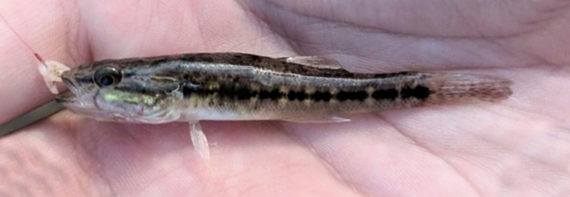 Pacific Sleeper, Gobiomorus maculatus, Juvenile. Fish caught in brackish coastal waters of Manzanillo, Colima, in February 2019. Length: 6.5 cm (2.6 inches). Photograph courtesy of Zayd Wheeler. Identification courtesy of Dr. Phil Hastings, Scripps Institution of Oceanography, La Jolla, California.
Pacific Sleeper, Gobiomorus maculatus, Juvenile. Fish caught in brackish coastal waters of Manzanillo, Colima, in February 2019. Length: 6.5 cm (2.6 inches). Photograph courtesy of Zayd Wheeler. Identification courtesy of Dr. Phil Hastings, Scripps Institution of Oceanography, La Jolla, California.
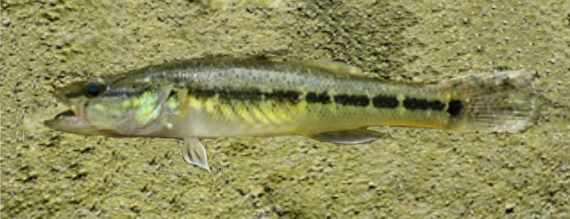 Pacific Sleeper, Gobiomorus maculatus, Juvenile. Fish caught from coastal waters off Mazatlán, Sinaloa, October 2020. Length: 10.2 cm (4.0 inches). Catch, photograph and identification courtesy of Eli (obsessiveangling.wordpress.com).
Pacific Sleeper, Gobiomorus maculatus, Juvenile. Fish caught from coastal waters off Mazatlán, Sinaloa, October 2020. Length: 10.2 cm (4.0 inches). Catch, photograph and identification courtesy of Eli (obsessiveangling.wordpress.com).
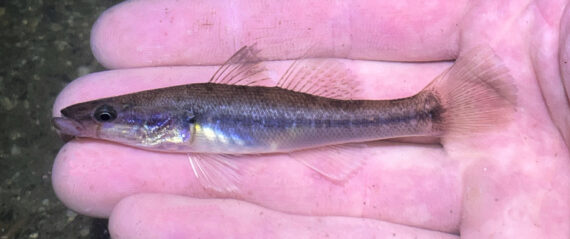 Pacific Sleeper, Gobiomorus maculatus, Juvenile. Fish caught from the San José del Cabo Rió, Baja California Sur, April 2022. Length: 11.2 cm (4.4 inches). Catch, photograph and identification courtesy of Luke Ovgard, Klamath Falls, Oregon
Pacific Sleeper, Gobiomorus maculatus, Juvenile. Fish caught from the San José del Cabo Rió, Baja California Sur, April 2022. Length: 11.2 cm (4.4 inches). Catch, photograph and identification courtesy of Luke Ovgard, Klamath Falls, Oregon
 Pacific Sleeper, Gobiomorus maculatus, Juvenile. Fish collected by locals with a cast net at the mouth of the San José River, Baja California Sur, August 2008, during a breach in the barrier. Length: 12.0 cm (4.7 inches). Identification courtesy of H.J. Walker, Jr. and confirmed by Dr. Phil Hastings, Scripps Institution of Oceanography, La Jolla, California.
Pacific Sleeper, Gobiomorus maculatus, Juvenile. Fish collected by locals with a cast net at the mouth of the San José River, Baja California Sur, August 2008, during a breach in the barrier. Length: 12.0 cm (4.7 inches). Identification courtesy of H.J. Walker, Jr. and confirmed by Dr. Phil Hastings, Scripps Institution of Oceanography, La Jolla, California.
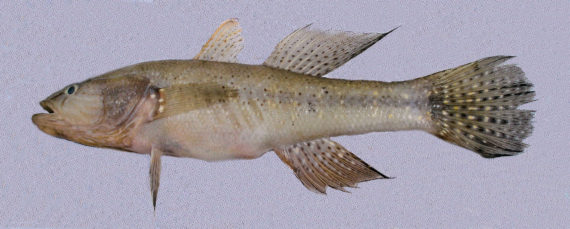 Pacific Sleeper, Gobiomorus maculatus, Male. Fish collected by locals with a cast net at the mouth of the San José River, Baja California Sur, August 2008, during a breach in the barrier. Length: 25 cm (10 inches). Identification courtesy of H.J. Walker, Jr. and confirmed by Dr. Phil Hastings, Scripps Institution of Oceanography, La Jolla, California.
Pacific Sleeper, Gobiomorus maculatus, Male. Fish collected by locals with a cast net at the mouth of the San José River, Baja California Sur, August 2008, during a breach in the barrier. Length: 25 cm (10 inches). Identification courtesy of H.J. Walker, Jr. and confirmed by Dr. Phil Hastings, Scripps Institution of Oceanography, La Jolla, California.
 Pacific Sleeper, Gobiomorus maculatus, Male. Fish collected by locals with a cast net at the mouth of the San José River, Baja California Sur, August 2008, during a breach in the barrier. Length: 26 cm (10 inches). Identification courtesy of H.J. Walker, Jr. and confirmed by Dr. Phil Hastings, Scripps Institution of Oceanography, La Jolla, California.
Pacific Sleeper, Gobiomorus maculatus, Male. Fish collected by locals with a cast net at the mouth of the San José River, Baja California Sur, August 2008, during a breach in the barrier. Length: 26 cm (10 inches). Identification courtesy of H.J. Walker, Jr. and confirmed by Dr. Phil Hastings, Scripps Institution of Oceanography, La Jolla, California.
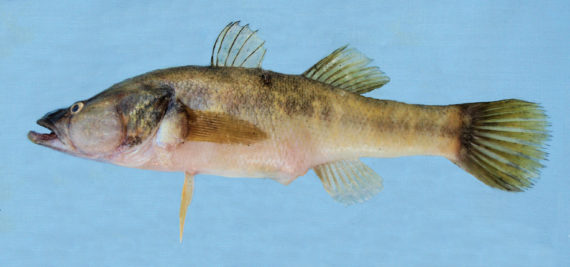 Pacific Sleeper, Gobiomorus maculatus, Female. Fish collected by locals with a cast net at the mouth of the San José River, Baja California Sur, August 2008, during a breach in the barrier. Length: 28.5 cm (11.2 inches). Identification courtesy of H.J. Walker, Jr. and confirmed by Dr. Phil Hastings, Scripps Institution of Oceanography, La Jolla, California.
Pacific Sleeper, Gobiomorus maculatus, Female. Fish collected by locals with a cast net at the mouth of the San José River, Baja California Sur, August 2008, during a breach in the barrier. Length: 28.5 cm (11.2 inches). Identification courtesy of H.J. Walker, Jr. and confirmed by Dr. Phil Hastings, Scripps Institution of Oceanography, La Jolla, California.
The Pacific Sleeper, Gobiomorus maculatus, is a member of the Sleeper or Eleotridae Family, and is known in Mexico as dormilón manchado. Globally, there are four species in the genus Gobiomorus, of which two are found in Mexican waters, one in the freshwater drainage systems of the Atlantic and one, this species, in the freshwater drainage system of the Pacific Ocean.
The Pacific Sleeper has an elongated cylindrical body that tapers at the rear. Adults are dark mottled brown and transition to white ventrally. Their fins are transparent and their pectoral fins have a dark band at the base. They are sexually dimorphic with males having longer anal fins and dorsal rays as well as rows of small dark spots on their caudal and dorsal fins. Juveniles have a dark stripe mid-body and three bars radiating from their eyes. Their mouth is large and oblique with a projecting lower jaw equipped with small conical teeth in several rows and additional teeth on the roof of the mouth. Their anal fin has 1 spine and 9 or 10 rays; their caudal fin is rounded with a long base; their first dorsal fin has 6 small spines and a short base; their second dorsal fin has 1 spine and 9 rays and a base that is shorter than the distance separating it from the caudal fin; their pectoral fins have 15 or 16 rays; and, their pelvic fins have 1 spine and 5 rays and are widely seperated. Their head is elongated and conical with a depression above it with eyes that are longitudinal ovals. They have large gill openings extending forward to under the mouth. They are covered with rough scales and do not have a lateral line.
The Pacific Sleeper is a demersal species found in freshwater rivers, creeks, and lakes with varying levels of salinity and with temperatures between 24oC (75oF) and 33oC (91oF) at elevations below 90 m (300 feet). Juveniles are more common near the coast. They reach a maximum of 35 cm (14 inches) in length with females being larger than males. They consume crustaceans and fish. Reproduction includes pelagic eggs and larvae. The Pacific Sleeper is poorly studied with very limited information available about their lifestyle and behavioral patterns including specific details on age, growth, longevity, movement patterns, diet, habitat use, and reproduction.
The Pacific Sleeper is most likely confused with the Spotted Sleeper, Eleotris picta (eyes very close to tip of snout), however, it is one of several freshwater Sleepers found in Mexican freshwater systems that is not well documented, poorly studied, and the source of significant confusion about this species.
The Pacific Sleeper is found in all Mexican freshwater systems that drain into the Pacific Ocean from Magdalena Bay, Baja California Sur, southward along the southwest coast of Baja, from La Paz, Baja California Sur, southward along the east coast of Baja, and from the central Sea of Cortez, Sinaloa, south along the coast of the mainland to Guatemala.
From a conservation perspective the Pacific Sleeper is currently considered to be of Least Concern with stable, widely distributed populations. They are fairly common in Mexican freshwater of the Pacific Ocean watershed, however, they are of limited interest to most with the exception of subsistence fishermen.